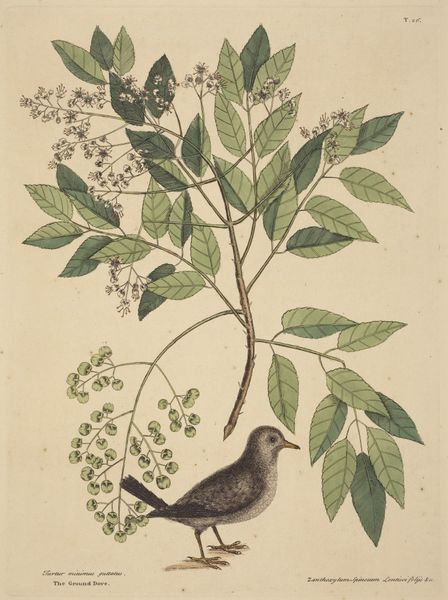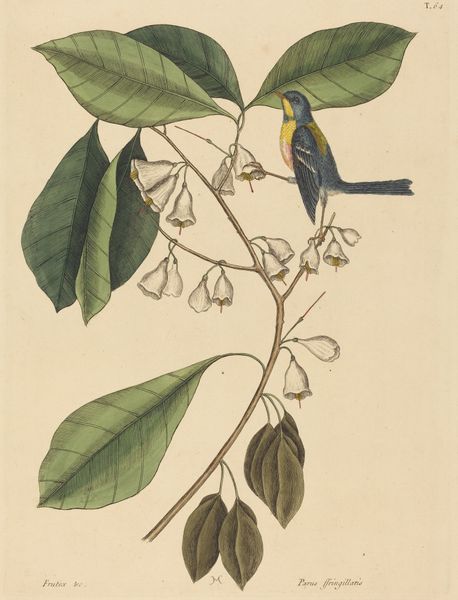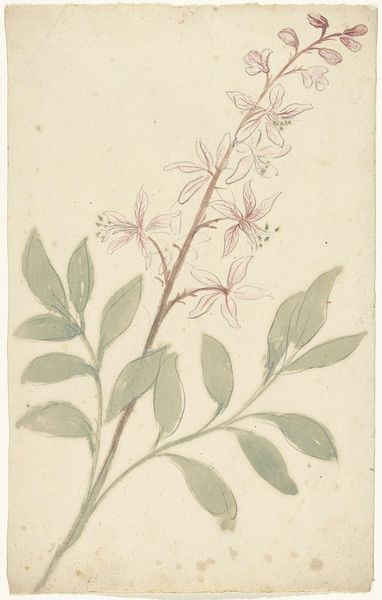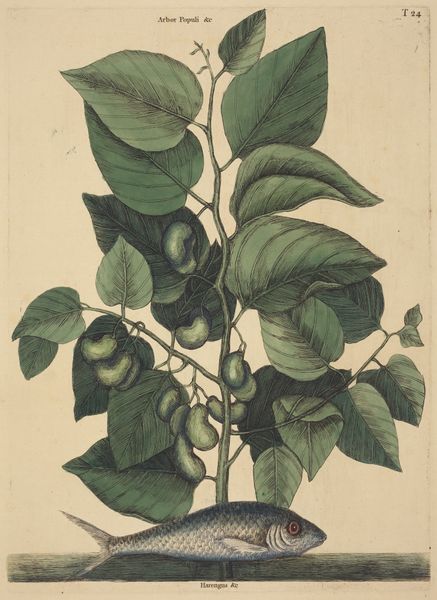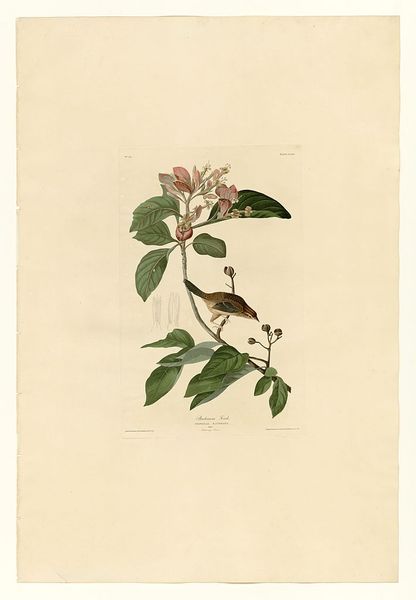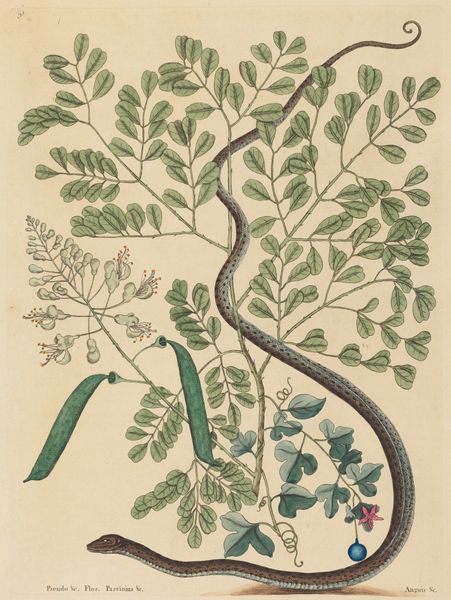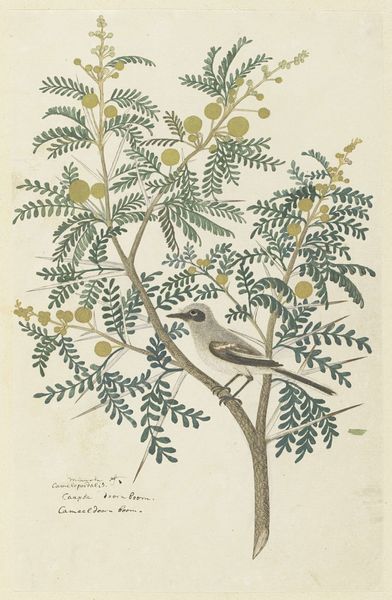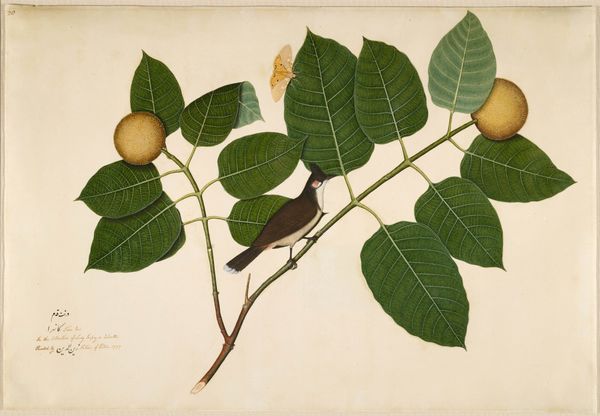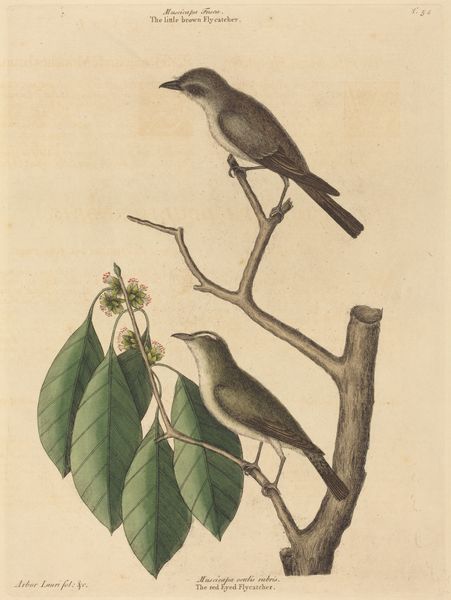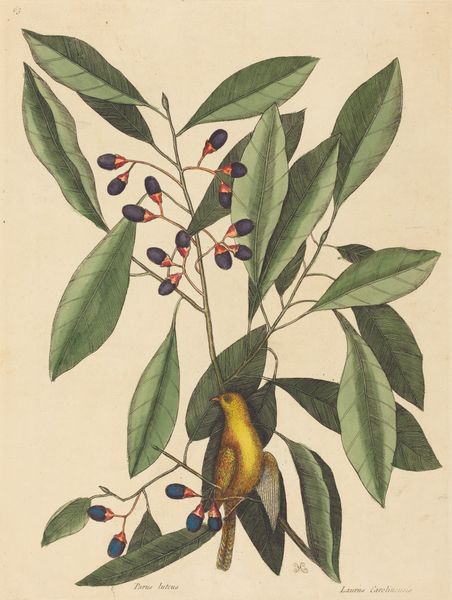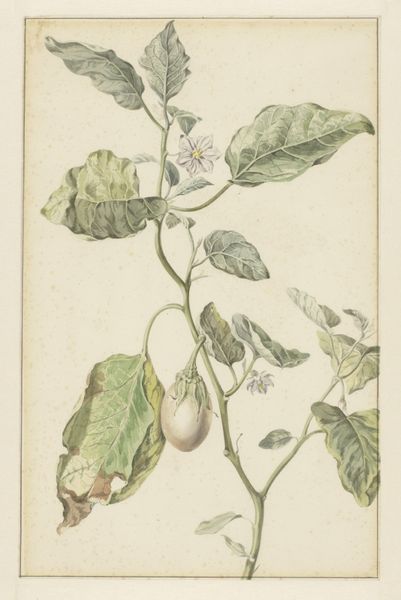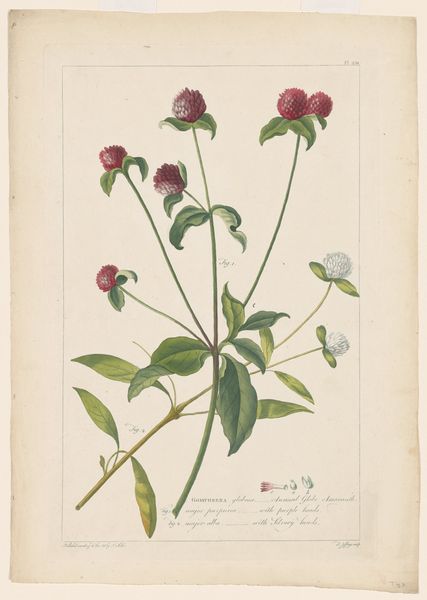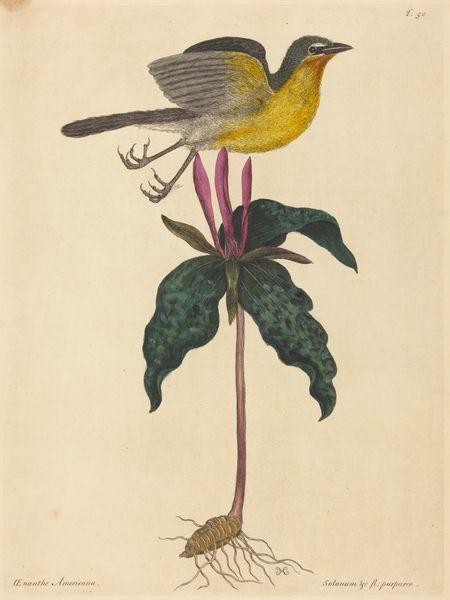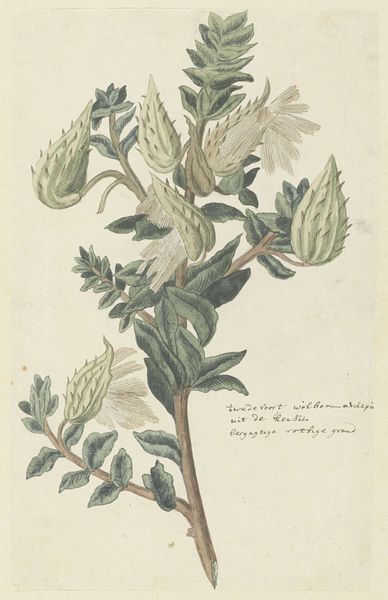
hand-colored-etching, painting, print, watercolor
#
vegetal
#
hand-colored-etching
#
natural world styling
#
painting
# print
#
landscape
#
botanical illustration
#
watercolor
#
botanical drawing
#
watercolour illustration
#
botanical art
#
watercolor
#
realism
Dimensions: 13 7/8 x 10 1/4 in. (35.31 x 26.04 cm) (sheet)
Copyright: Public Domain
Curator: Ah, "The Chatterer," a hand-colored etching by Mark Catesby, created sometime between 1731 and 1743. It's part of the Minneapolis Institute of Art's collection. Editor: My first impression is of something delicate, almost scientifically precise, yet the colour palette feels intentionally muted, lending a slightly melancholy air. It reminds me of old botany textbooks. Curator: Catesby's work is significant because he was one of the first naturalists to document the flora and fauna of North America. He both wrote and illustrated his "Natural History of Carolina, Florida and the Bahama Islands," making him unique for his time. Editor: Indeed, and the 'chatterer' itself, perched amidst the branches, surrounded by those star-like blossoms, immediately evokes associations of springtime renewal. Bird-and-blossom is such a perennial visual motif in so many cultures. What does this composition convey, specifically in the context of early American scientific exploration? Curator: Catesby's illustrations served not just as scientific records, but as important sources of visual information for European audiences curious about the New World. The presence of the bird – the Chatterer – also known as the Cedar Waxwing, offers insights into colonial perceptions of abundance. This image also raises questions about appropriation, how colonists laid claim to the land and its resources. Editor: The term ‘chatterer’ seems loaded here – naming conventions of the time are telling in the subtext of the bird itself, one doing the chattering; one ‘being’ nature. Given the context, this depiction then perhaps speaks volumes about human control over the natural world, particularly in the burgeoning colonial narrative. Curator: Precisely. Catesby was funded by wealthy patrons back in England, and their expectations would have undoubtedly shaped the images he created and shared. These images become intertwined with the goals and motivations of colonisation. Editor: That gives us something more to chew on than I expected, considering that, visually, it reads simply like a graceful watercolor of a cute bird on a flowering branch. These are not always innocent or straightforward at all, as the symbolism shifts and becomes richer with contextualisation. Curator: Yes, "The Chatterer", despite its charm, embodies the complex historical relationship between naturalism, colonialism, and artistic representation. Editor: Quite. A pretty picture can be a powerful tool.
Comments
No comments
Be the first to comment and join the conversation on the ultimate creative platform.
